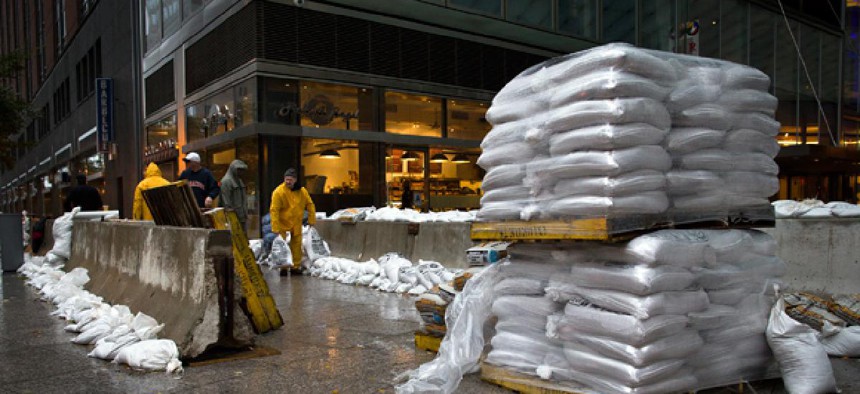What if we didn't know Hurricane Sandy was coming?

John Minchillo/AP
The New York Times reports that dying satellites threaten our ability to forecast storms in the years ahead.
It's no exaggeration that our ability to forecast storms saves lives and dollars every year. But what if we were no longer able to make those forecasts?
Of course, it's not that we would lose the knowledge of how to do so. The problem is that we might lose the data that feeds our models.
The New York Times reports that our weather-monitoring satellites -- which fly from pole to pole, crossing the critical zone around the Equator in the early afternoon -- are dying, and mismanagement and underfunding (generally resulting from Bush-era decisions or congressional Republican budgets) mean that replacement ones are behind schedule. ($182 million dollars for the weather satellites will disappear should sequestration -- automatic cuts looming in 2013 -- come to pass.) The result may be "a year or more" without the data these satellites provide. John H. Cushman Jr. reports:
Experts have grown increasingly alarmed in the past two years because the existing polar satellites are nearing or beyond their life expectancies, and the launching of the next replacement, known as JPSS-1, has slipped until early 2017, probably too late to avoid a gap of at least a year.
Prodded by lawmakers and auditors, the satellite's managers are just beginning to think through their alternatives when the gap arrives, but these are unlikely to avoid it.
The mismanagement of the $13 billion program, which goes back a decade, was recently described as a "national embarrassment" by a top official of the Commerce Department.
This summer, three independent reviews -- by the Commerce inspector general, the Government Accountability Office, and a blue-ribbon team of outside experts -- each questioned the government's cost estimates for the program, criticized the program's managers for not pinning down the designs and called for urgent remedies. The project is run by Commerce's National Oceanic and Atmospheric Agency, along with NASA.
NEXT STORY: The birth of Hurricane Sandy





